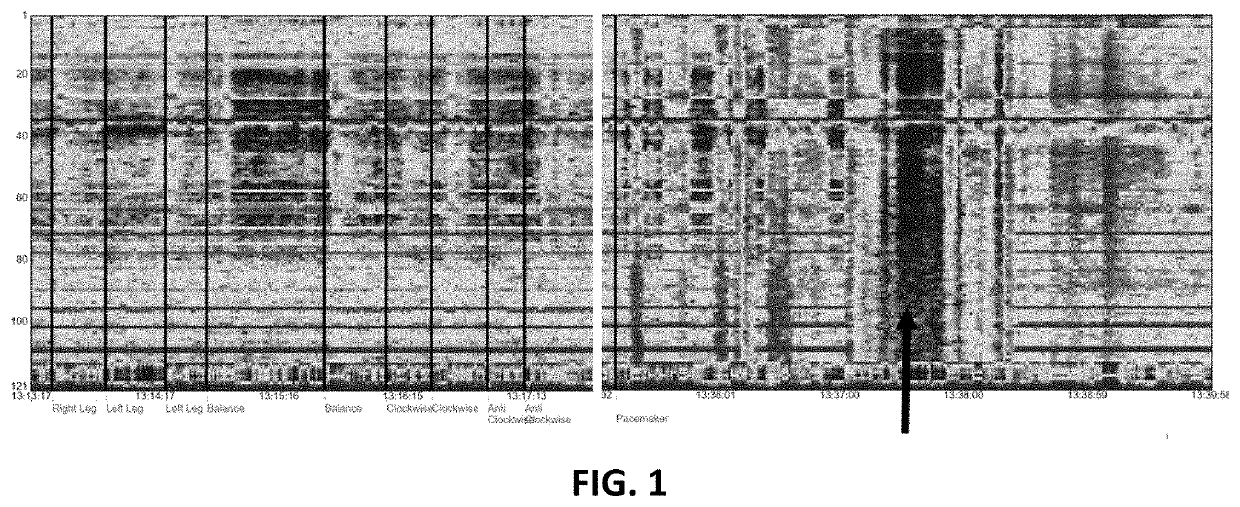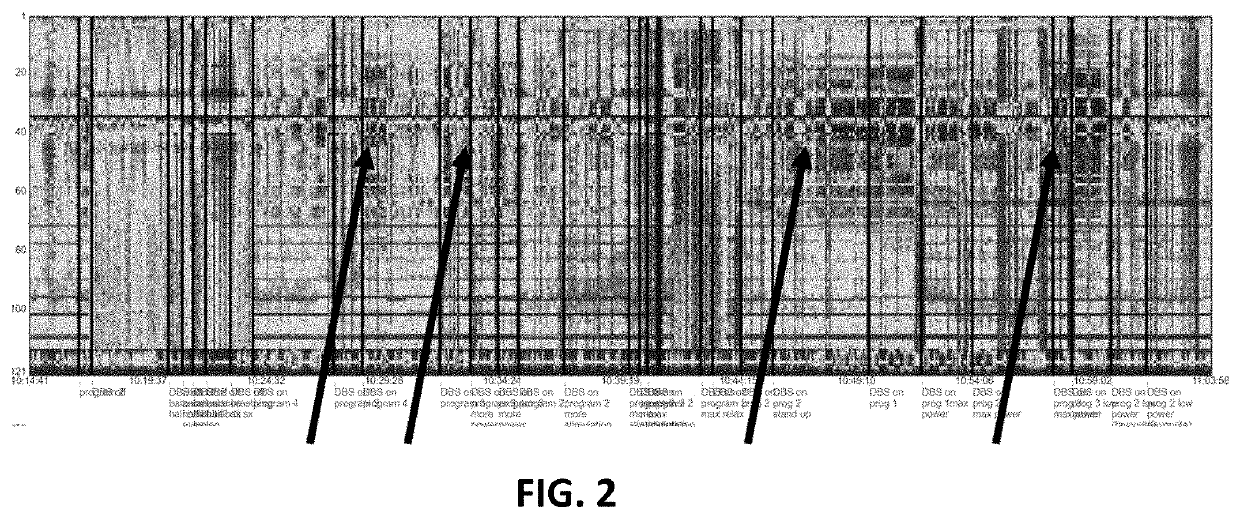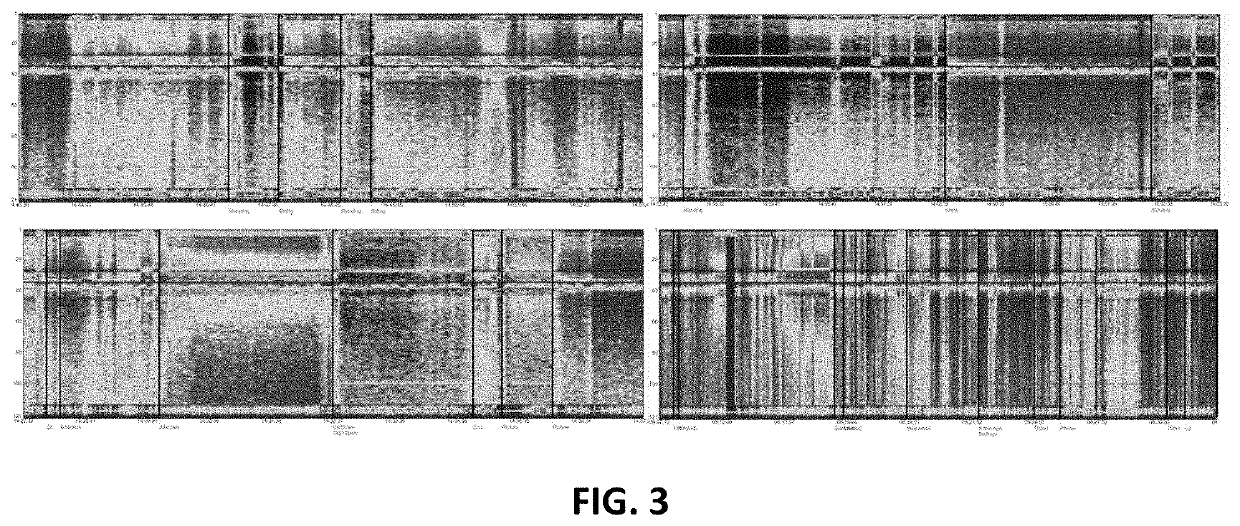Systems and Methods for Cooperative Invasive and Noninvasive Brain Stimulation
- Summary
- Abstract
- Description
- Claims
- Application Information
AI Technical Summary
Benefits of technology
Problems solved by technology
Method used
Image
Examples
example 1
Optimizing DBS for Parkinson's Patients
[0702]FIG. 1 depicts brain activity as described in WO 2016 / 132228 and U.S. Patent Application Publication No. 2017 / 0347906, the entire content of each of which is incorporated herein by reference. The horizontal red lines are an indication of the activity of the DBS. At some point, the DBS is turned off (black arrow), and as shown in FIG. 1, brain activity is significantly reduced when DBS is turned off. It is important to study brain activity during a specific task which is challenging to the subject and is strongly affected by the disorder such as Parkinson's. In the present example, the challenging task is to stand on a balance board. Standing on a balance board requires quick communication between the two brain hemispheres and quick balance in each hemisphere. For healthy subjects, this task activates cognitive region A which includes features from 20 to 60.
[0703]FIG. 2 shows the effect of different DBS stimulation parameters on the brain ...
example 2
Optimizing Stimulation Location, Strength, and Duration to Produce Increased Activity in a Desired Region
[0704]In a particular embodiment, stimulation location, strength, and duration of a transcranial direct current stimulation (tDCS) device can be optimized to produce increased activity in the 20 to 60 region (described in Example 1), or in the “executive” region of 35 to 39, a region which is less active for comatose patients. If the goal is to reduce stress, then other BAFs in the 60 to 121 may be used for the optimization.
[0705]The same optimization can be done to transcranial alternating current stimulation (tACS), as well as magnetic and ultrasound stimulation, but in these cases, the specific pattern of stimulation, frequency, and morphology can also be optimized.
[0706]It is also possible to optimize the required activity of the subject during the stimulation to produce optimal stimulation effect. A person can perform a passive operation such as watching a movie or listening...
PUM
 Login to View More
Login to View More Abstract
Description
Claims
Application Information
 Login to View More
Login to View More - R&D
- Intellectual Property
- Life Sciences
- Materials
- Tech Scout
- Unparalleled Data Quality
- Higher Quality Content
- 60% Fewer Hallucinations
Browse by: Latest US Patents, China's latest patents, Technical Efficacy Thesaurus, Application Domain, Technology Topic, Popular Technical Reports.
© 2025 PatSnap. All rights reserved.Legal|Privacy policy|Modern Slavery Act Transparency Statement|Sitemap|About US| Contact US: help@patsnap.com



